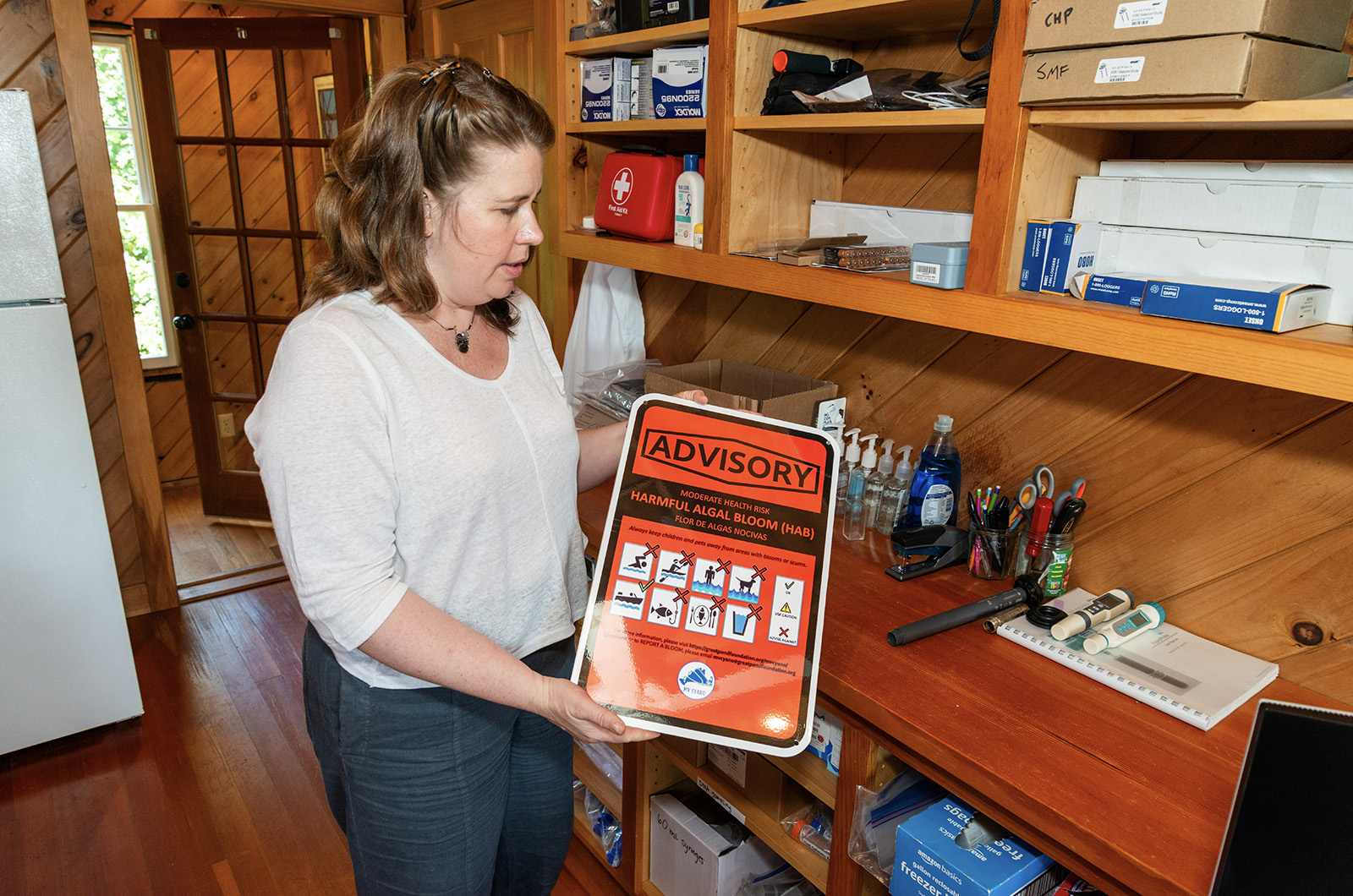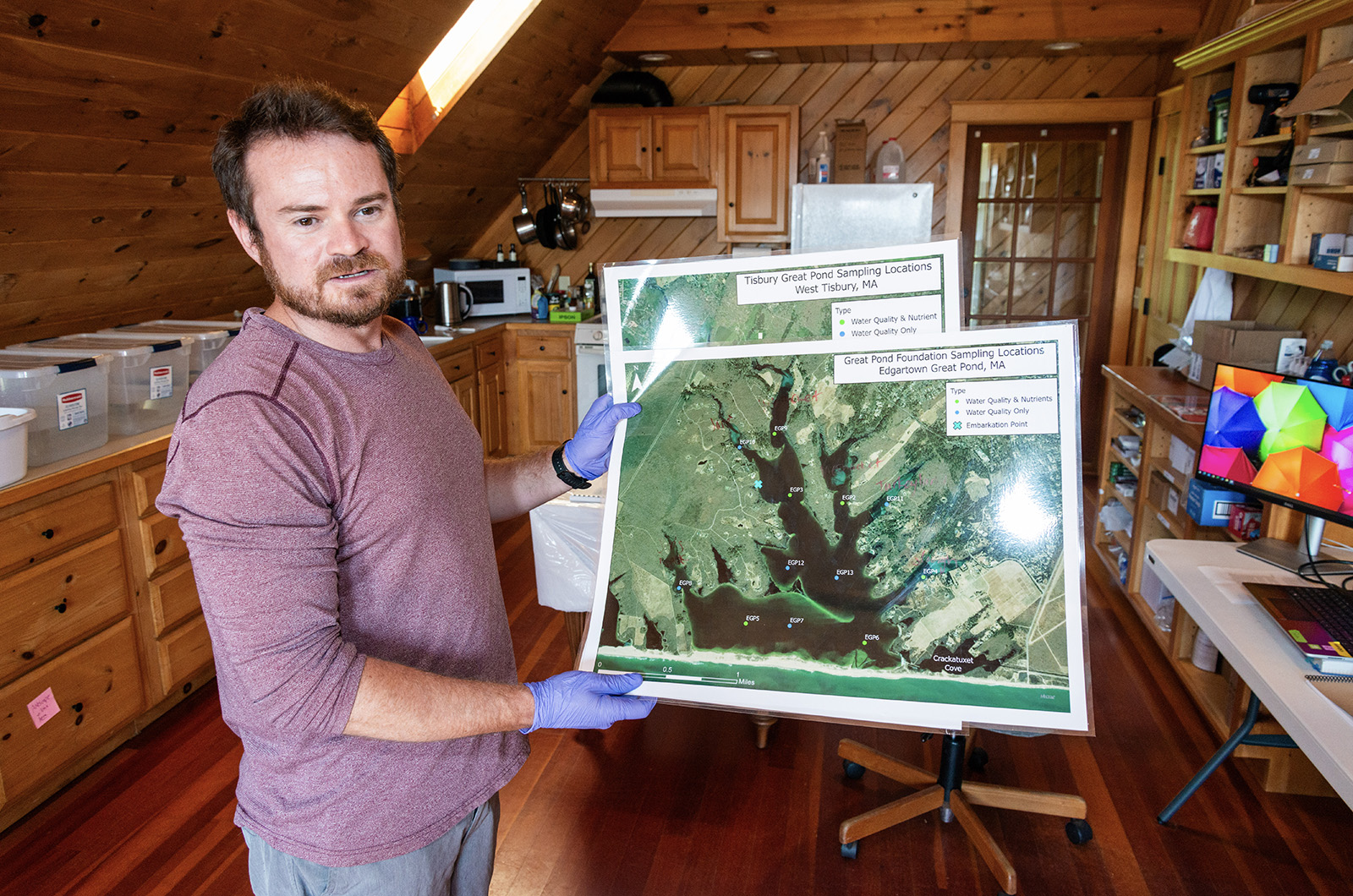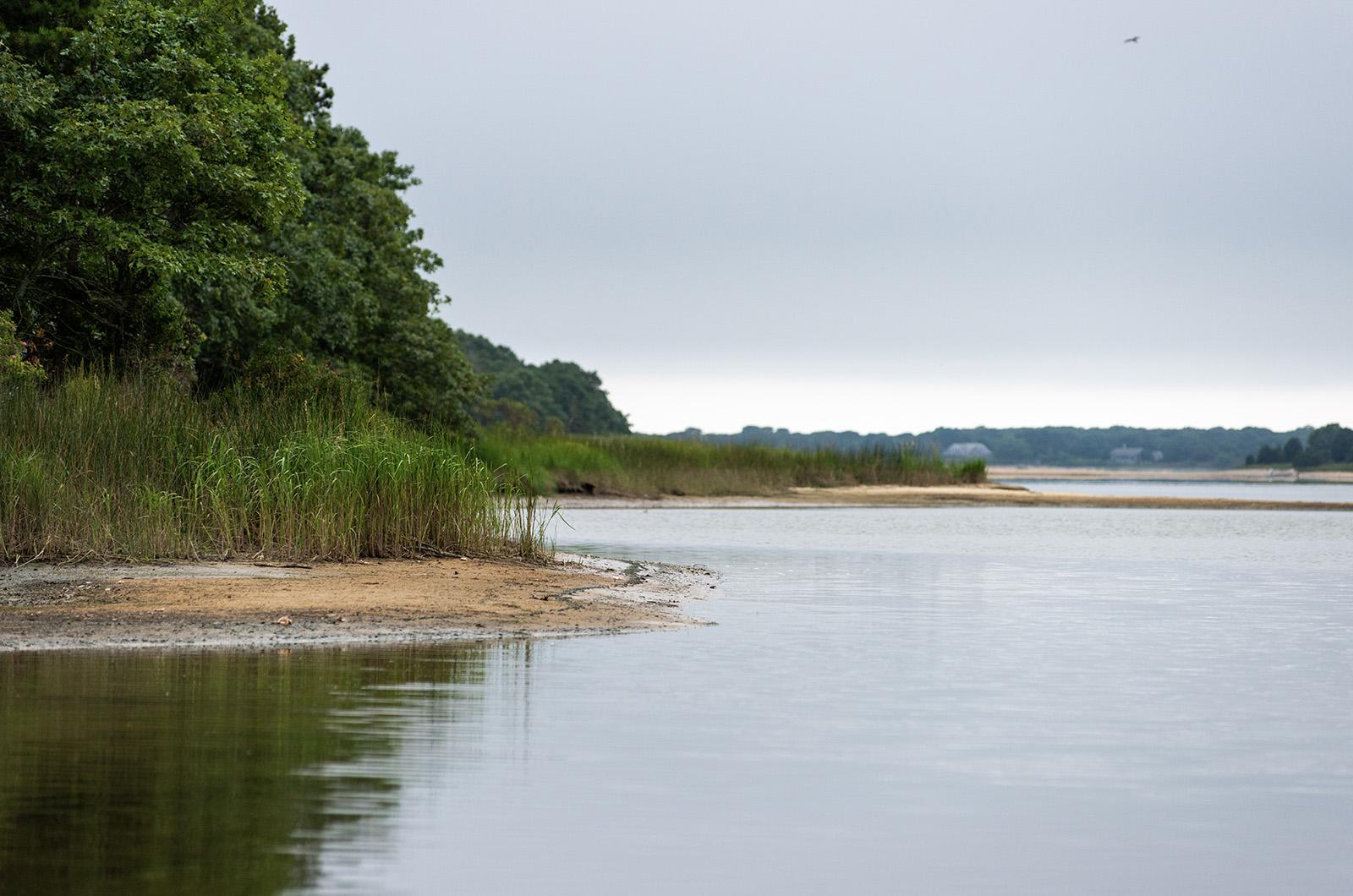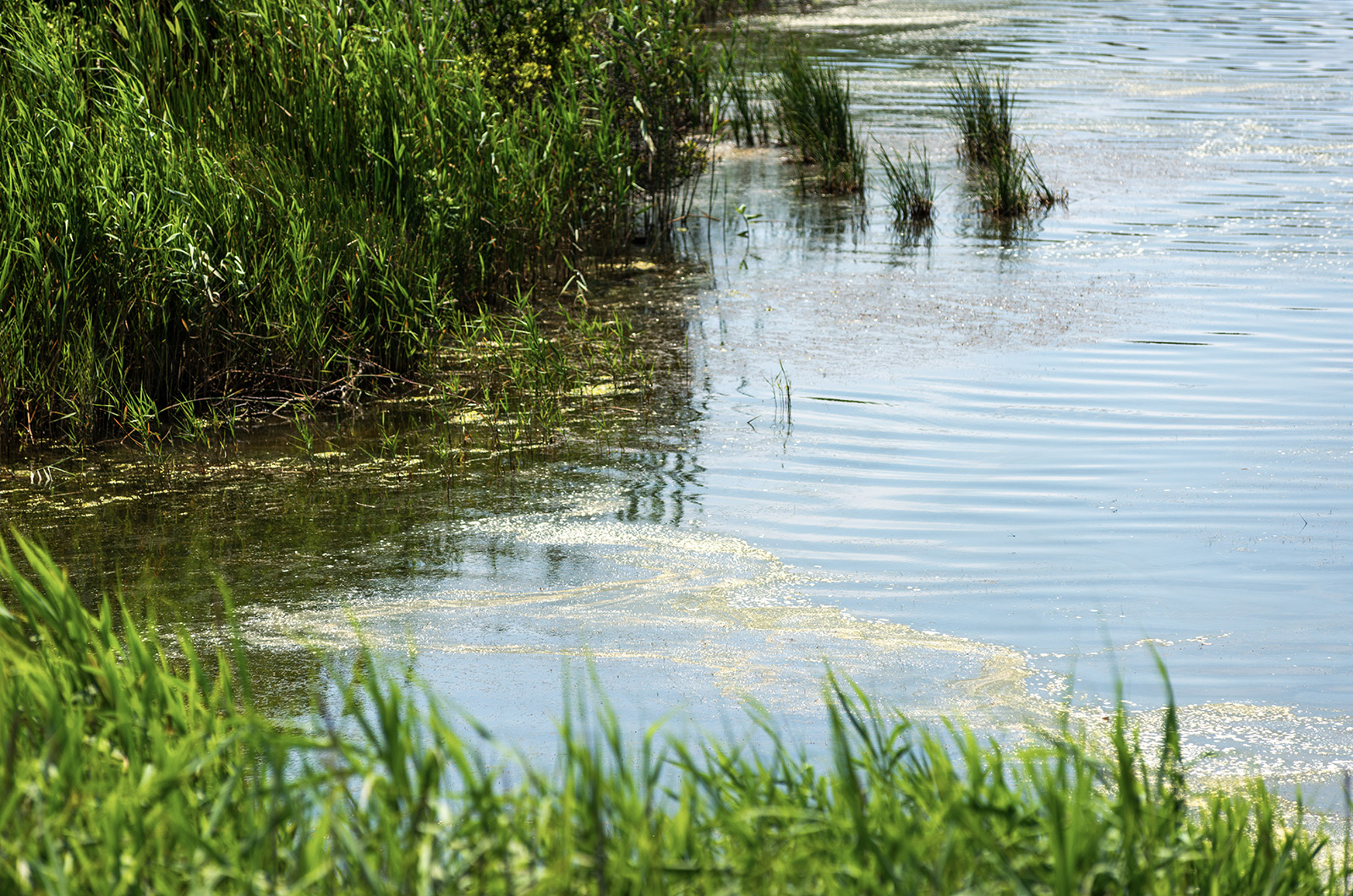Clean, safe water in public ponds is no longer a given on Martha’s Vineyard.
So far this summer, Islanders have been warned against going in or even coming in contact with parts of four different ponds because of harmful blooms of biotoxin-producing microbes.
MVCyano, a coalition of local boards of health and the Great Pond Foundation, has issued “red-grade” cyanobacteria bloom advisories in Chilmark Pond, Tisbury Great Pond, James Pond and a pond at Mink Meadows. The group recommends against any and all contact with the potentially toxic water for humans and pets alike.

Several other ponds, including Squibnocket and Edgartown Great Pond, have had lower-level warnings.
The proliferation of cyanobacteria blooms is a relatively recent trend on Martha’s Vineyard, an Island peppered with brackish ponds once thought to be inhospitable to the microorganisms that constitute these toxic blooms. Now, as waters warm and as nitrogen pollution disrupts coastal ecosystems, scientists and health officials are working to understand the causes and impacts of cyanobacteria blooms on-Island.
“It’s right at the cutting edge of science,” said David Bouck, who recently took over as director of science and collaboration with the Great Pond Foundation.
Cyanobacteria, also known as blue-green algae, is a group of single-celled, photosynthetic organisms widespread in ponds, oceans and estuaries across the globe. When present in high concentrations, known as blooms, some cyanobacteria species can produce “cyanotoxins” toxic to humans and dogs.
Knowledge about how cyanobacteria behave in conditions present on the Vineyard, however, is limited.
During an interview at the foundation’s laboratory, Mr. Bouck brandished the 1,000-plus-page World Health Organization guide to cyanobacteria.
“The body of knowledge is constantly changing, there’s a lot we just don’t know yet,” he said. “They update this every year . . . but it mostly deals with freshwater ecosystems.”
The collaboration that became MVCyano had its roots in 2020. Several consecutive years of visible blooms and tests indicating high levels of cyanotoxins in the ponds impelled the boards of health and the foundation to map out a game plan for how to deal with the phenomenon.
“We didn’t have a way to test if there was a bloom, or to communicate if there was a bloom or take samples from the right place if there was a bloom,” said Emily Reddington, executive director of the Great Ponds Foundation. “When we didn’t know what to do, we did a lot of research to find out who did.”
The blueprint for the Vineyard, it turns out, is from another island in the northeast. Researchers on Long Island in New York who studied the brackish estuaries in the Hamptons had seen the blooms for years.

“They are warmer, and they have greater development pressures, so it’s like the Vineyard into the future if nothing is changed,” Ms. Reddington said.
The foundation teamed up with the Gobler Laboratory at Stony Brook University to take advantage of that expertise. While Mr. Bouck can identify the presence of a bloom with his lab equipment, researchers at Stony Brook are able to identify individual species — no easy feat when it comes to cyanobacteria.
“Cyanobacteria are always there, and they always have been,” Mr. Bouck said, noting that the microorganisms were among the first photosynthetic life forms to evolve on earth, giving them millennia to diversify.
The mere presence of cyanobacteria, Mr. Bouck said, is not the problem – only when environmental factors cause the microbe to unnaturally proliferate does it begin to pose a threat to other organisms.
“A cyanobacteria bloom is a sign of an ecosystem out of balance,” he said.
That imbalance is typically caused by nitrogen pollution in the ponds, he said, which he said has its origins in home septic systems. That assertion was confirmed by a study completed by the foundation last year, which identified septic systems as the primary source of nitrogen pollution in Island ponds.
Increased nitrogen gives cyanobacteria an extra boost to grow in brackish Vineyard estuaries, which, Ms. Reddington said, can have knock-on effects for human toxicity.
“We’re dealing with cyanobacteria that they didn’t think could be in marine situations . . . that are the extremes of their tolerance,” she said. “If you stress out a cyanobacteria . . . it gets pretty upset, and under that stress condition it might produce higher than expected levels of cyanotoxin.”
The group’s current effort is focused on unraveling the complex interactions contributing to and resulting from blooms, with the foundation testing water samples collected by the boards of health and from stations monitored by their staff. The group also started a study into the genetic material in those samples, hoping to understand how cyanobacteria interact with other microbes in Island waters.
Increased awareness of blooms has also helped the foundation improve their coverage.
“We also sometimes get reports from the public that say, ‘I see something green, can you come take a sample?’” Ms. Reddington said.
The identifications of blooms in the Tisbury Great Pond and at Mink Meadows this year were both the result of public reporting.
But to fix the issue at its source will require a major shift in current Island trends and attitudes, according to Mr. Bouck.
“Nutrient issues are kind of becoming more of an issue. Temperatures are increasing and pace of development has increased,” he said. “We need to change the way that we interact with the ecosystem to bring it back into balance.”






Comments (7)
Comments
Comment policy »